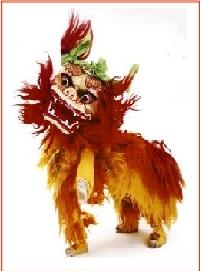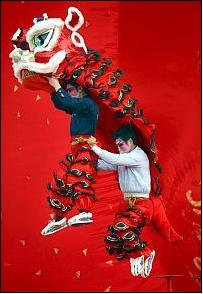
GONG HEI FATT CHOY!
Welcome to the year of the fire dog :)
For the Chinese, Chinese New Year (CNY) is a colourful, vibrant and noisy time of the year. It's quieter now since fireworks were banned. But the rumble of the drums and clash of the cymbals still persist thanks to the Lion Dance performances all over town.
Home owners, shopping complexes and business owners invite Lion Dance troupes to perform at their homes or premises to ‘chase away’ bad luck and to usher in the New Year.
Ever wondered how the Lion Dance came about? Here’s an interesting write-up I found in the Whitefish Bay Kung Fu Club’s website:
Origins
There are many versions of how Lion Dance began. The most popular tells of a great Demon named Nian (Chinese for "year") who would come each year and terrorize the people. The people pleaded to Heaven for help against the demon and finally the gods sent Lion. Lion, a heavenly deity, came to earth and chases away the demon. The next year, the people cried out for help again, but Lion would not come. So a wise man told them to make a paper Lion and dance around menacingly while others beat on drums and gongs and lit firecrackers and displayed red cloth to frighten away the demon. The trick worked and they have been chasing the demon away every year since then. And that's why the Lion Dance is part of Chinese New Year Celebrations.


The Dance
The Lion dance is a key element in the celebration of any Chinese holiday or special event. The Lion and musicians chase away evil spirits and bring good luck, long life, and prosperity to all present. The Lion is the emblem of valor, courage, energy and wisdom. The Lion dance is an extension of the Chinese martial arts and is always performed by martial artists.
Not only do the performers display strength, coordination, agility and endurance, they also exemplify the martial spirit in the Ssu-Wei or the four basic supports of a State: Li, or Decorum, Yi, uprightness of mind, Lien, honesty, and Chih, a sense of honor. The goal of the Lion is to find a way to get to the Choy Chang, which is a bunch of greens that usually hides a red envelope called Lai See, containing the payment given to the Lion dancers by the host. There are a number of different Changs or puzzles and each one has a different solution. But whatever the Chang is it is always eaten by the Lion and then spit out.
History
The Shaolin Monastery was founded over 1500 years ago and to this day remains well-known as the greatest repository of martial arts in the world. Hung Gar is a style that came out of the Southern branch of Shaolin during a time when Ming Dynasty Patriots of Southern China were in RebelLion against foreign domination by the Manchus of the Ching Dynasty. Lion dance was very popular among martial arts schools at that time since it required great strength and agility to master the dance. Hung Gar was used almost exclusively by rebel forces led by secret societies that later became the Triads and Tongs. In fact secret messages about enemy positions and troop movements were passed to rebel leaders hidden in the choy chang of a Lion dance. Even the act of spitting out the choy chang represents casting out the foreign domination of the Ching Dynasty.

No comments:
Post a Comment